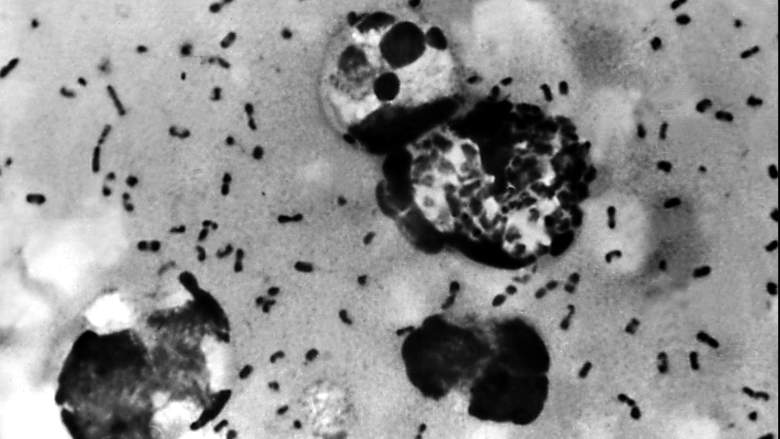
Getty A bubonic plague smear, prepared from a lymph removed from an adenopathic lymph node, or bubo, of a plague patient, demonstrates the presence of the Yersinia pestis bacteria that causes the plague in this undated photo. The FBI has confirmed that about 30 vials that may contain bacteria that could cause bubonic or pneumonic plague have gone missing, then found, from the Health Sciences Center at Texas Tech University January 15, 2003 in Lubbock, Texas. The plague, considered a likely bioterror agent since it's easy to make, is easily treatable with antibiotics if diagnosed early and properly.
China has issued a warning for plague prevention after a herdsman in Mongolia was discovered to be infected with bubonic plague, the same one responsible for the deaths of 50 million people in the 14th century.
A second case is also suspected in that region, according to The Global Times, after a 15-year-old was in contact with a Marmot that a dog hunted. The teen reportedly now has a fever.
Marmots are large burrowing squirrels who are most active in the summer months and have a history of carrying bubonic plague. They are hunted for their meat and sometimes their pelts.
As a measure to stop the spread of the highly infectious disease, the Chinese government has issued a third-level warning that will last until the end of 2020, which means the hunting and eating of animals that could carry plague is forbidden, according to the BBC.
The local commission is also urging the public to report any cases of illness that manifest with plague-like symptoms, which includes “fever, headache, chills, weakness and one or more swollen, tender and painful lymph nodes,” according to the Centers for Disease Control. They’re also asking anyone who finds sick or dead marmots or other animals to report those findings.
Bubonic Plague Has Never Been Irradicated But It’s Treatable With Antibiotics in Most Cases

GettyA marmot sits on a rock on a mountainside above the retreating Pasterze glacier on August 14, 2019 near Heiligenblut am Grossglockner, Austria.
Cases of bubonic plague have popped up in the U.S. since it was introduced to the country in 1900. According to the CDC from 1900 to 2012, there were 1006 confirmed or probable human plague cases in the Nation. Before antibiotics, the death rate from bubonic plague in the U.S was 66%.
Over time, antibiotics helped reduce mortality rates and by 1990-2010 only 11% of people who were diagnosed with bubonic plague died from the disease in the U.S.
However, “Plague can still be fatal despite effective antibiotics,” the CDC reports.
Last April two Russian tourists in Mogolia died from bubonic plague after eating infected Marmot meat in Mongolia.
According to Heavy’s previous reporting, “The couple was taking part in an ancient Mongolian tradition of eating marmot, which is believed to instill greater health and stamina.”
The husband hunted a marmot and shared the meat with his pregnant wife. Both died after contracting the plague from the infected animal, leaving four children behind.
Bubonic Plague Can Be Spread From Flea Bites, Eating Infected Animals and From Person to Person

GettyA doctor wears protective clothing during an outbreak of plague in Manchuria in 1912.
The most common way to get infected by the bubonic plague is from a flea bite. According to the CDC fleas that feed on infected rodents or other mammals carry the disease, spreading it to whatever it feeds on next.
A more direct route is if a person handles or eats a plague-infected animal.
The plague can be transmitted from person to person via respiratory droplets that are expelled from a sick person and inhaled by someone nearby, but according to the CDC, that’s the rarest way it is spread these days.
In the U.S., cases are mostly concentrated “in rural and semi-rural areas of the western United States. Plague is most common in the southwestern states, particularly New Mexico, Arizona, and Colorado,” according to the CDC.
Plague in the U.S. is very rare and is relatively easy to contain, though there is still no vaccine.
Dr. Shanthi Kappagoda, an infectious disease physician at Stanford Health Care, told Healthline, “Unlike in the 14th century, we now have an understanding of how this disease is transmitted. We know how to prevent it — avoid handling sick or dead animals in areas where there is a transmission. We are also able to treat patients who are infected with effective antibiotics, and can give antibiotics to people who may have been exposed to the bacteria [and] prevent them [from] getting sick.”
READ NEXT: Lydia Tillman & Kenia Monge Forever Connected By Murderer Travis Forbes